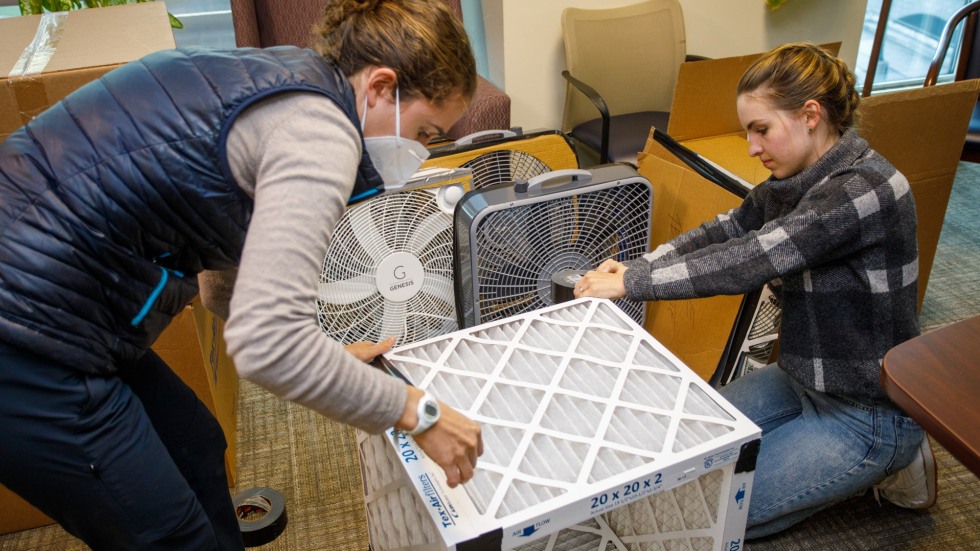PROVIDENCE, R.I. [Brown University] — A team of researchers from Brown University's School of Public Health, Brown’s School of Engineering and Silent Spring Institute found that simple air filtration devices called Corsi-Rosenthal boxes are effective at reducing indoor air pollutants.
The study, which analyzed the effectiveness of Corsi-Rosenthal boxes installed at the School of Public Health to help prevent the spread of COVID-19, is the first peer-reviewed study of the efficacy of the boxes on indoor pollutants, according to the authors.
Lowering indoor air concentrations of commonly-found chemicals known to pose a risk to human health is a way to improve occupant health, according to lead author Joseph Braun, an associate professor of epidemiology at Brown.
“The findings show that an inexpensive, easy-to-construct air filter can protect against illness caused not only by viruses but also by chemical pollutants,” Braun said. “This type of highly-accessible public health intervention can empower community groups to take steps to improve their air quality and therefore, their health.”
Corsi-Rosenthal boxes, or cubes, can be constructed from materials found at hardware stores: four MERV-13 filters, duct tape, a 20-inch box fan and a cardboard box. As part of a school-wide project, boxes were assembled by students and campus community members and installed in the School of Public Health as well as other buildings on the Brown University campus.
To assess the cubes’ efficacy at removing chemicals from the air, Braun and his team compared a room’s concentrations of semi-volatile organic compounds before and during the box’s operation.
The results, published in Environmental Science & Technology, showed that Corsi-Rosenthal boxes significantly decreased the concentrations of several PFAS and phthalates in 17 rooms at the School of Public Health during the period they were used (February to March 2022). PFAS, a type of synthetic chemical found in a range of products including cleaners, textiles and wire insulation, decreased by 40% to 60%; phthalates, commonly found in building materials and personal care products, were reduced by 30% to 60%.




